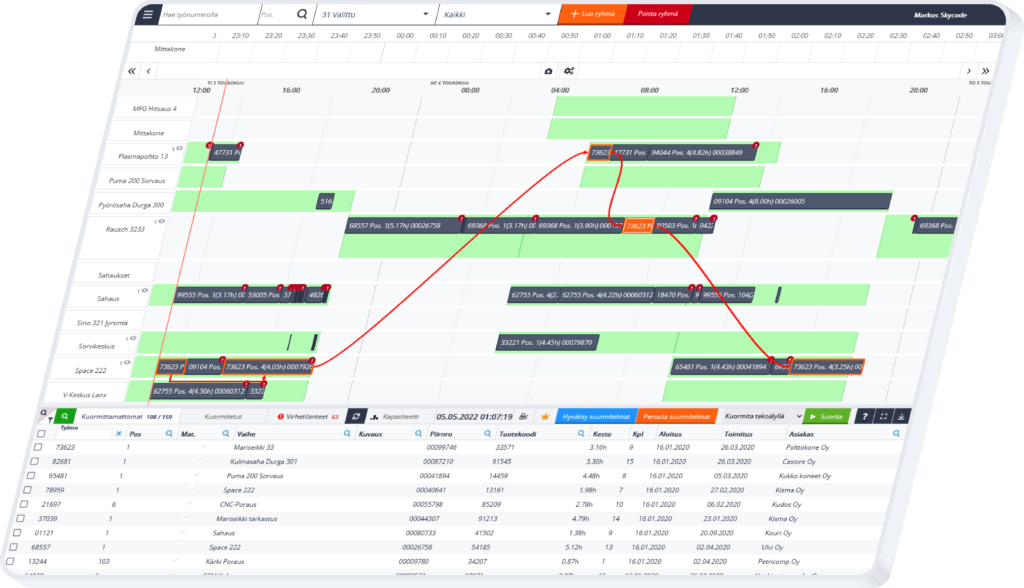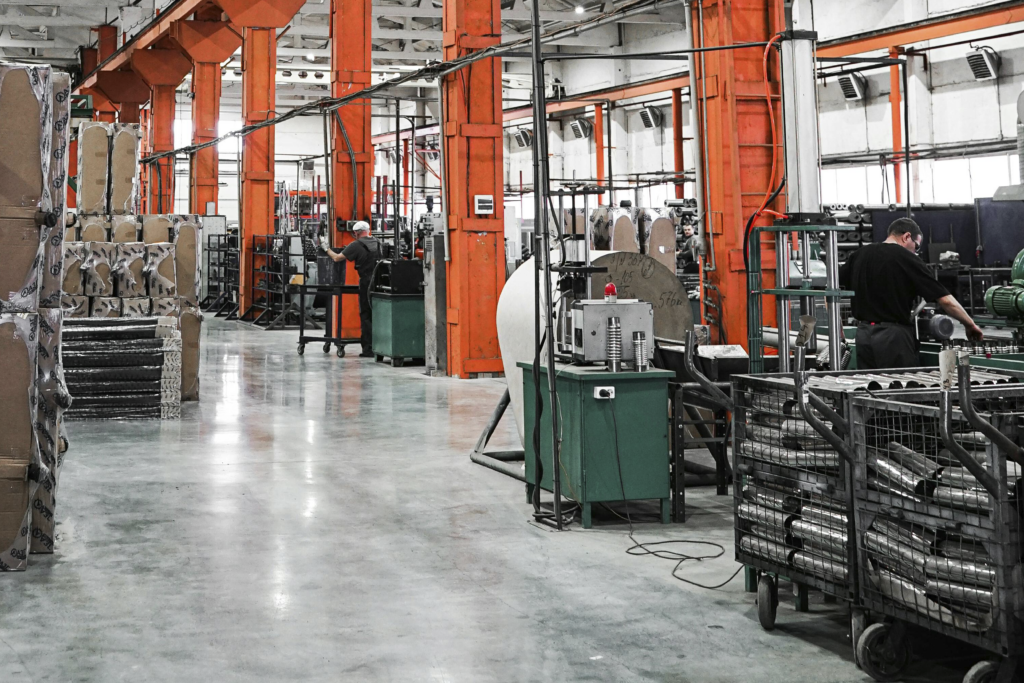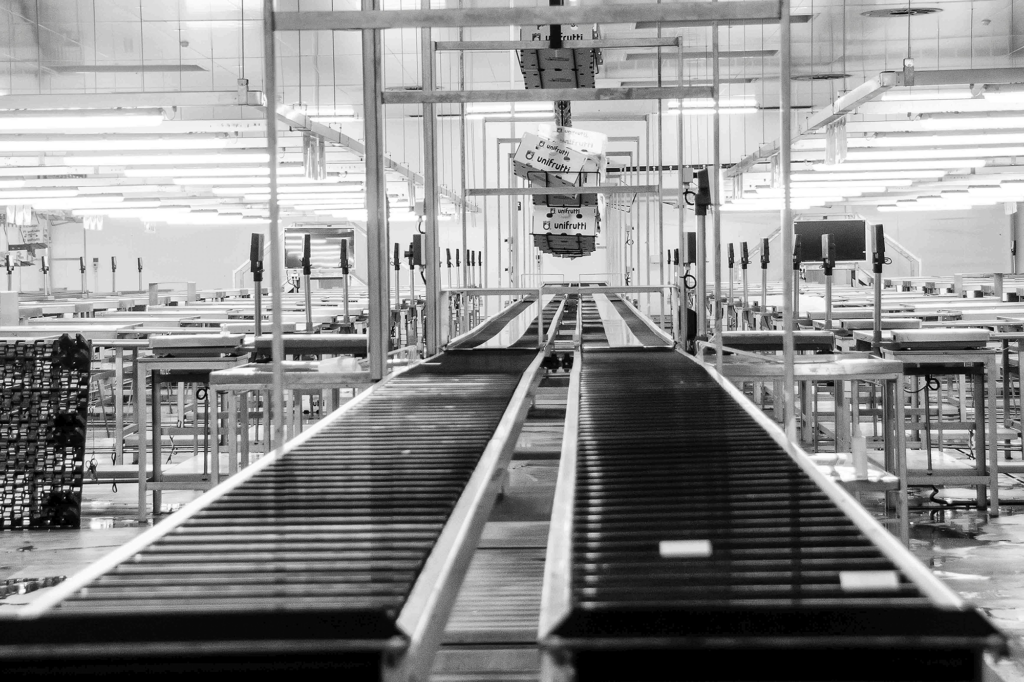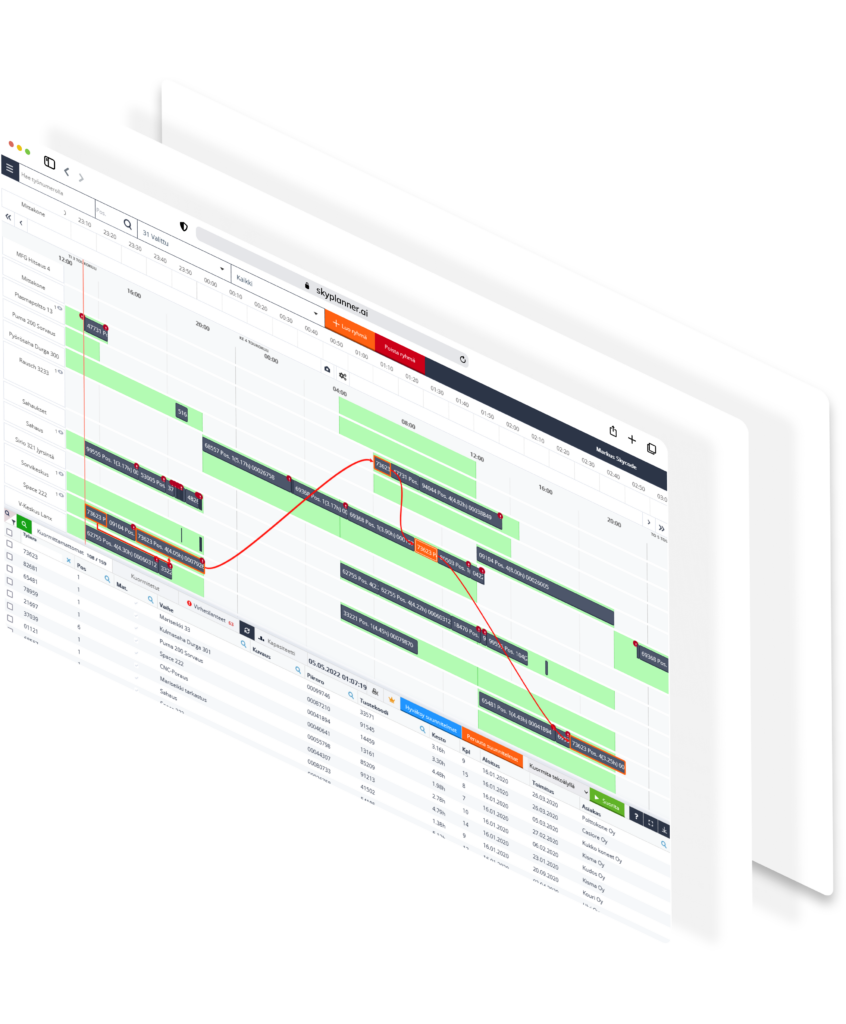What is Supply Chain Management (SCM)?
Estimated reading time: 0 minutes
Have you ever wondered how many people worked in manufacturing the cellphone that you own or why the energy prices went up? It is not just one company that produces a final product and delivers it to your local store but several that work in synergy to create a good and make it accessible to you or a client.
But how is it possible to coordinate several companies for just a single product? It is all thanks to Supply Chain Management.
What is Supply Chain Management?
As a whole, supply chain management (SCM) is the management of the flow of resources, data, processes, and finances involved in the life cycle of creating a product or service.
A supply chain is a network that involves all the individuals, resources, information, organizations, and their sequence of activities to create and sell a product or service to a final destination. Ranging from purchasing and delivering material to creating a product, a supply chain ends when a product is delivered to a client or distribution to a final user.
A supply chain seeks to create more optimal processes, an accelerated cash flow, and faster deliveries. However, the main goal of a supply chain is to meet and satisfy demand, optimize response capacity, build an efficient network, create profitability and generate value for the customer.
There are several activities during the supply chain, such as planning, sourcing, making, delivering, and returning. Overseeing these actions is known as Supply Chain Management (SCM).
Difference between supply chain and SCM
The difference between supply chain and supply chain management is that the latter supervises that all the points of the supply chain work correctly, seeking to add value through efficiency, optimize processes and reduce costs.
A team of specialist supply chain managers executes the activities during the supply chain. The best way to manage a supply chain will depend on all those involved in the processes having good communication and promptly sharing information in real-time to identify and solve problems most effectively. SCM software can aid in this task. Supply chain management software is a tool used across the different parts of the supply chain to have better control over the complex job of encompassing the activities inside the supply chain network, such as vendor, quality, logistics, and distribution.
Nowadays, the world is suffering from a supply chain management crisis. The main cause is delays within the supply chain network. Most of it is because of the pandemic, e-commerce growth putting pressure on transport providers, China’s zero Covid lockdowns, and the Ukrainian war. These events have wreaked havoc on the fluidity of how supply chains work together, causing prices to skyrocket.

Advanced production planning with AI – SkyPlanner APS
Read more about our approach to production planning and optimization leveraging the power of AI.
How does Supply Chain Management work?
These are the 5 steps of supply chain management:
- Planning
Good planning is the first step to success in supply chain management. It is the step in which companies foresee how much material will be needed for the elaboration of a product, the labor force, the time, the equipment, and who in the supply chain must participate. In addition, the client’s future needs must be predicted in case of placing a larger order later, thus avoiding shortages of raw materials. Most companies use Material Requirements Planning Software to help the SCM to plan the order and achieve the goals more effectively. - Sourcing
Solid relationships and excellent coordination with suppliers help keep SCM processes efficient. A reliable supplier must:- Deliver raw materials that meet the given specifications to start manufacturing.
- It has competitive prices according to the market.
- It has a verifiable good track record of delivery and satisfied customers.
- Possesses the ability to deliver last-minute raw material in case of emergency.
- Maintains good communication with clients.
- Manufacturing
It is the essential step of supply chain management. It is the process in which the raw material is transformed into the requested product or service through machinery and labor. The production encompasses assembly, testing, inspection, and packaging. Efficient supply chain management monitors every step so that the product meets customer specifications and avoids production delays. - Delivery
When the product is finished and approved by quality control, the next step is to send the order to the customer. Good logistics and communication with parcel providers are essential for on-time delivery and creating an image with the customer. Supply Chain Management wants delivery to be safe and reasonably priced, so having various parcel options is ideal in emergencies. - Returning
Companies will always seek to deliver the perfect product in compliance with the customer’s specifications; however, sometimes a product has to be returned, either due to changes made by the customer, an error by the company that manufactured it, or another reason. Good customer service does not end with delivery, so a company must have the ability to receive returned products and be able to give refunds to remedy the situation.
The benefits of Supply Chain Management
- Reduce costs and make the company more profitable
An immediate benefit is to reduce operating costs. By having greater control by being able to monitor the progress of production and better fluidity of communication, there are fewer errors in the manufacturing processes, reducing purchase, storage, and workforce costs, increasing cash flow, and obtaining higher profits. It is much easier if a company uses automated supply chain management. An automated SCM will streamline and optimize the processes of creating a product or service and avoid underproduction. SCM will also allow full traceability of all the movements of goods from the supplier to the customer. Companies that use the JIT method benefit significantly from Supply Chain Management Software. - SCM allows companies to be up to date with the pace of technology
The world is becoming more globalized, so companies have to adapt to the new demands of consumers. The best way to achieve this goal is through supply chain management, which will help a company to have more optimal and efficient processes. SCM makes a company more competitive, ready to face the challenges of any bottleneck, new demands, or intermittent problems that arise. - Better communication and more transparent information
In a globalized world, being in constant communication during all the steps of creating a product or service is vital. The faster an error is detected, the easier it will be to solve it, and it will have a lower cost, mitigating expenses. For example, an SCM can seek an immediate solution to avoid delays if a supplier or an outsourcing company has delayed delivery. Supply chain management allows greater visibility of the situation during the production process, enabling everyone that is part of a company’s supply chain to work more harmoniously and holistically. SCM also allows accurate, timely, complete, and relevant information flow to avoid missed opportunities and make a company grow. This step will be quite an easy task using technological tools such as mobile phone applications, software, and conferencing platforms. - Boosts shipment efficiency
Just as a company expects the necessary material to start production, the customer seeks to have their order on time, so shipping methods are a crucial phase in supply chain management. With reasonable control of the SCM, you can collaborate with different shipping companies, having a method segmented according to the package size, destination, and type of product you plan to send. - Happier customers
A good supply chain management creates products faster and delivers earlier or on time without harming or sacrificing the quality of the product or service; it can add added value. Fulfilling and exceeding expectations means more satisfied customers, improving the business relationship, and creating more loyal clients.

What are some common issues with Supply Chain Management?
All the steps within the chain are necessary, but their proper administration and management can be complex and present several challenges. Common obstacles are:
- Delay or loss of goods
We have to start this list with the problem that delays the entire supply chain, the lack of material due to loss or delay. If there is no material, the production process can’t start. If there is no contingency plan, this can delay the delivery to the client and end up losing it or paying immediately. A Warehouse Management System can assist SCM in tracking and keeping the inventory under control. - Lack of Communication and Transparency
Having control and knowing how each of the stages of a supply chain process is developing is key to its success. If information is obtained in real-time from work, it will facilitate decision-making and solving problems that arise. - Mismanagement of resources
If a company doesn’t estimate correctly how much material a process will need or predict the demand that a product may have, it can lead to excess inventory, increasing costs, and wasting time. - Unsatisfactory Customer Service
Good customer service and quality product delivery on time are vital to creating a good relationship with customers. Some are even willing to pay a slightly higher price to get a special deal. Therefore, realistic expectations must be drawn up with the client to comply with what was agreed. - Low capacity for sudden changes
It is nothing new that several changes can occur when manufacturing a product within the supply chain process, be it due to late delivery, a broken machine, last-minute changes from the customer, or even bad weather or external factors. Therefore, it is necessary to have a tool capable of generating contingency plans at the moment.
Streamline your production
Supply chain management generates advantages that benefit any company, especially those not self-sufficient. Most businesses work and collaborate with others simultaneously, such as shipping companies or suppliers, to get the final product into customers’ hands. For this reason, an SCM is essential for a company that wants to grow and meet the demands of the modern world.
You can add a Supply Chain Management software into an existing system, such as ERP technology. This incorporation will make the SCM software more agile with the help of automized processes and real-time information flow between the network. Skyplanner APS Solution can be customized to meet your ERP and SCM needs. Our team of professionals is ready to help your company grow and face any sporadic crisis.
Inquire and find out how we can help you.

Skyrocket your production with SkyPlanner APS
Book a demo with our tech team to see how SkyPlanner APS works in real life.









